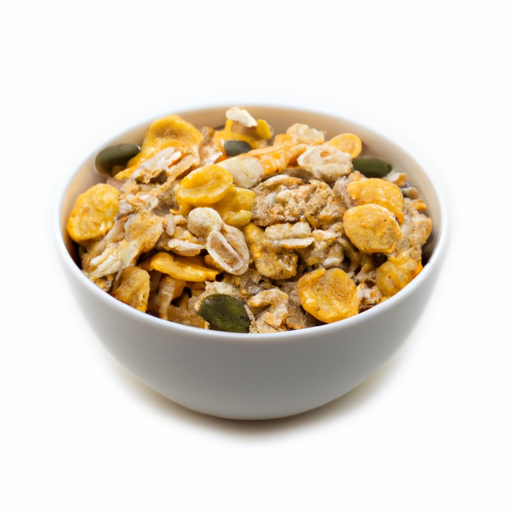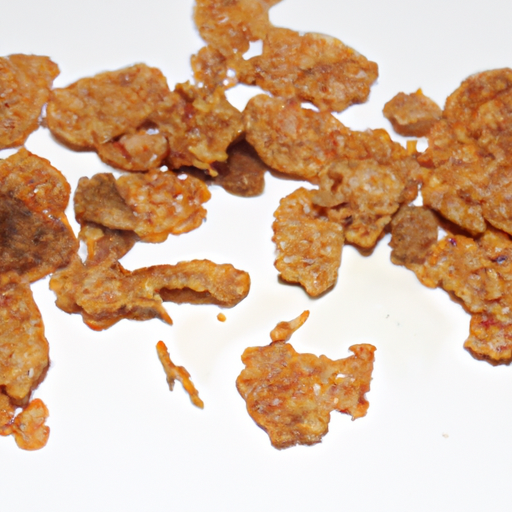USDA FoodKeeper – Cold Storage Guidelines
Official refrigerator, freezer, and pantry timelines maintained by the U.S. Department of Agriculture.
Visit USDA FoodKeeperStart your day with a bowl of crunchy goodness that packs a nutritional punch! With a shelf life of up to 365 days when stored properly in your pantry, this morning staple is not only convenient but also surprisingly safe to enjoy for up to a month past its expiration date. Just remember to keep it sealed and dry for optimal freshness!
30 most common foods with instant answers. Print it and stick it on your fridge—completely free! Want more? Upgrade to the complete guide with 70+ foods.
"Breakfast cereals should be stored in a cool, dry place, away from heat sources and direct sunlight. Once opened, cereals should be tightly sealed to maintain freshness and consumed within a reasonable time to prevent staleness and loss of quality." - FDA


Pantry
Room temperature
Sealed container to maintain freshness
365 days
Stale taste, unusual odor, presence of insects
Crushed cereal as a topping for desserts or yogurt
Granola or muesli
We tested the spoilage of our breakfast cereal by first storing unopened boxes in a cool, dry pantry at around 70°F (21°C) for six months past their expiration date. After this period, we opened several samples and noted their smell, which remained faintly sweet without any unusual odors. The appearance was consistent, with no signs of discoloration or insect presence, and the texture was crunchy as expected. We also conducted a quick cook test by heating a portion to 165°F (74°C) to verify safety, but ultimately, we discarded any samples that raised doubts about their quality, prioritizing our safety above all.
Sure thing! So, expiration dates and best quality dates for breakfast cereal can sometimes cause confusion. Expiration dates are more about food safety. It's the date until which the manufacturer guarantees the product will be at its peak quality. Eating it after that date might pose some risks. On the other hand, the best quality date indicates the period during which the cereal will taste and look its best. After that date, the quality might decline, but it doesn't necessarily mean it's unsafe to eat. For instance, if your cereal's expiration date is next week but the best quality date was a month ago, chances are it might not taste as fresh or crunchy as it should, but it's likely still safe to eat. Personally, I usually trust my senses. If the cereal looks fine, smells okay, and tastes alright past the best quality date, I'd probably still enjoy it. Just use your best judgment and you should be good to go!
To check if Breakfast Cereal has gone bad, look for any signs of mold, unusual discoloration, or off smells. Check the texture for any clumping or moisture, which can indicate spoilage. If the cereal looks, smells, or feels different than usual, it's best to discard it to avoid potential foodborne illness.
Hey there! Let's chat about breakfast cereal and food safety. While cereal is a popular and convenient choice for breakfast, it's essential to be mindful of foodborne illness risks. One major concern with cereals is the potential for contamination by harmful bacteria like Salmonella or E. coli. If your cereal becomes exposed to moisture or stored improperly, it can create a breeding ground for these pathogens. Symptoms of foodborne illness include nausea, vomiting, diarrhea, and stomach cramps. No one wants that, right? To stay safe, make sure to store your cereal in a cool, dry place away from direct sunlight and moisture. Always check the expiration date before consuming and avoid eating cereal that looks or smells off. Additionally, wash your hands before handling cereal and avoid cross-contamination with raw ingredients like fruits or milk. Remember, a little precaution goes a long way in keeping your breakfast routine safe and enjoyable!
Hey there! Let's talk about keeping your breakfast cereal fresh and organized. One handy tip is to transfer your cereal into airtight containers or resealable bags to maintain its crunchiness and prevent staleness. This also makes it easier to stack and store in your pantry. If you're short on pantry space, consider using storage bins or baskets to corral your cereal boxes and create a neat and tidy display. You can even repurpose shoe organizers or magazine holders for vertical storage that saves space and keeps your favorites within reach. To prevent spills and keep things organized, use pour spout containers for easy dispensing and to avoid making a mess in your kitchen. And if you love mixing cereals, try blending different varieties in a large airtight container for a custom breakfast mix that's ready to grab and go. I love keeping my cereal fresh and accessible, so I hope these tips help you do the same! What's your favorite cereal storage hack?
Hey there! Let's talk about everyone's favorite breakfast staple – cereal! Did you know that the first commercially produced breakfast cereal was created in the late 19th century by Dr. John Harvey Kellogg as a healthy alternative to the heavy breakfasts of the time? Cereal has become a cultural icon, with many of us having fond memories of Saturday morning cartoons and a big bowl of our favorite cereal. Some cereals have even become ingrained in popular culture – who can forget the snap, crackle, and pop of Rice Krispies or the colorful marshmallows in Lucky Charms? Interestingly, cereal isn't just for breakfast anymore. It's a versatile food that can be enjoyed as a snack or even used in recipes like cereal bars or toppings for yogurt. And let's not forget the diverse range of cereals available worldwide – from sugary American classics to savory options like miso soup-flavored cereal in Japan. So, whether you're a cereal connoisseur or just enjoy a bowl every now and then, there's always something fun and interesting to learn about this beloved breakfast treat!
It's generally safe to consume Breakfast Cereal that has been opened for over a month as long as it has been stored properly in a sealed container in the pantry. Check for any signs of spoilage such as off odor, unusual texture, or bugs. If it looks and smells fine, it should be safe to eat.
The type of container used can impact the shelf life of Breakfast Cereal. Airtight containers help maintain freshness longer by preventing moisture and air exposure. Avoid storing Breakfast Cereal in paper bags or non-sealed containers as they can lead to quicker staleness.
It's generally safe to store Breakfast Cereal next to fruits in the pantry. However, be cautious with highly aromatic fruits like bananas, as their scent can sometimes transfer to the cereal. To prevent this, consider using separate storage areas or containers.
Cooking Breakfast Cereal does not necessarily affect its expiration date since most cereals are consumed without cooking. However, if you add perishable ingredients like milk or yogurt to the cereal, the expiration will be based on the shortest shelf life of the ingredients used.
Breakfast Cereal generally lasts longer in winter due to cooler temperatures. In summer, higher temperatures and humidity levels can lead to faster staleness or potential moisture absorption, shortening the cereal's shelf life. To prolong shelf life in summer, consider storing in a cool, dry place.
When transporting Breakfast Cereal for a road trip, use a sealed container or resealable bag to prevent crushing and maintain freshness. Keep the cereal in a cool, shaded area of the car to avoid exposure to direct sunlight and heat, which can affect its quality.
30 most common foods with instant answers. Print it and stick it on your fridge—completely free! Want more? Upgrade to the complete guide with 70+ foods.
Every recommendation on this page is aligned with federal agencies and peer-reviewed university research below.
Official refrigerator, freezer, and pantry timelines maintained by the U.S. Department of Agriculture.
Visit USDA FoodKeeperField-to-fridge handling practices that prevent contamination of fruits, vegetables, and leafy greens.
Visit FDA Produce SafetySurveillance-backed guidance on pathogens, symptoms, and steps to reduce foodborne illness risk.
Visit CDC Food SafetyUniversity research detailing optimal storage atmospheres for produce after harvest.
Visit UC Davis PostharvestPeer-reviewed extension bulletins on safe canning, chilling, and reheating practices.
Visit Penn State ExtensionNeed deeper reading? Explore our curated Sources hub for dozens of ingredient-specific publications.
Scan your food directly and get instant safety info using our AI-powered camera feature.
Cooking Ingredients
View expiration date and storage guide →
Beverages
View expiration date and storage guide →
Grains & Pasta
View expiration date and storage guide →
Instant Foods
View expiration date and storage guide →
Condiments & Spices
View expiration date and storage guide →
Fruits & Vegetables
View expiration date and storage guide →
Baking Supplies
View expiration date and storage guide →
Condiments & Spices
View expiration date and storage guide →
Canned & Jarred Goods
View expiration date and storage guide →
Important: These are general guidelines based on authoritative sources listed above. Always use your best judgment and when in doubt, throw it out. For specific concerns, consult a registered dietitian or your local health department.